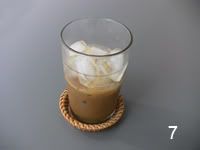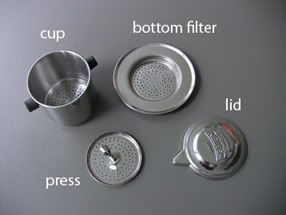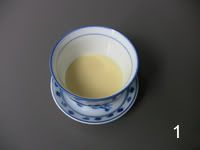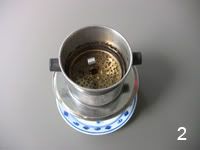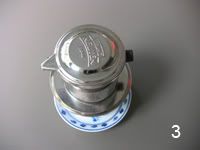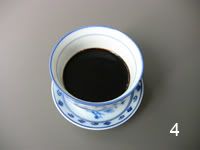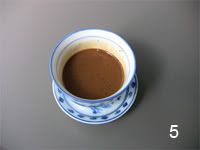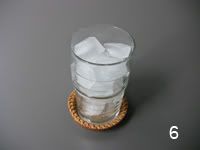If you are allergic to crustacean like my nephew, you could substitute shrimp balls with slices of pork meat. I added the crab paste to his bowl anyway [he can tolerate a small amount of shrimp/crab, apparently].
Crab Chili Paste recipe:
Ingredients:
- 1/2 cup diced white onion
- 1 tablespoon chili paste
- 1 tablespoon corn cooking oil
- 1 can of store bought crab meat paste
Directions:
- In a frying pan, add the oil. Turn the heat on medium. Once the oil is warm, add the onion. Stir constantly until the onion is golden in color.
- Then, add the crab meat paste. Stir, mix the onion and the crab meat paste. Smells good huh?
- Now, add the chili paste. Mix thoroughly again. Let it simmer for another 2 - 5 minutes then turn off the heat.

* The crab meat paste has this orange/red color to it. That's what gives the soup the color.
Home made shrimp balls recipe:
Ingredients:
Directions:
- Cut the shrimps into cubes. Process the shrimp.
- In a cooking large bowl, add the processed shrimp, white onion, salt, fish sauce and black pepper. Integrate all the ingredients together and mix.
To fry:
Cooking the Bánh Canh (from part 1):
- Bring a pot filled with water (1 gallon) to boil. Add 1 teaspoon salt and 1 tablespoon cooking oil. Mix.
- Drop the Bánh Canh in. The Bánh Canh is done when it turns clear and start floating to the surface.
- Drain the Bánh Canh out into a bowl.

Bánh Canh Cua Giò Heo continues....... broth to finish:
Ingredients: To thicken the broth.
- 3 table spoon tapioca flour
- 3 table spoon cold water
- Remove the radish, onion, bones and feet from the broth (see part 1). Strain the broth into another pot, once more.
- On medium heat, let the broth comes to boil.
- Season the broth by adding 1 tablespoon salt, 1 tablespoon fish sauce and 2 tablespoon sugar. Mix
- Next, stir the tapioca flour in cold water and add it directly to the broth. Stir vigorously.
- Add the crab chili paste. Stir vigorously.
- Add the cooked Bánh Canh. Stir gently to mix. Seaso again to taste.
 Bánh Canh Cua Giò Heo is best served hot. To serve, scoop the Bánh Canh Cua Giò Heo into a small bowl, add pieces of fried shrimp and paired it with chopped sawtooth coriander (can be substituted with cilantro), chopped scallion and chili (if you like it spicy). Enjoy!
Bánh Canh Cua Giò Heo is best served hot. To serve, scoop the Bánh Canh Cua Giò Heo into a small bowl, add pieces of fried shrimp and paired it with chopped sawtooth coriander (can be substituted with cilantro), chopped scallion and chili (if you like it spicy). Enjoy!
![[... From My Kitchen ...] experimenting with food.](http://3.bp.blogspot.com/-pgL4FVYGxcA/TV7iK6ODIAI/AAAAAAAABSg/dnF3qbql0Dg/s1600/frmmykitchenlogo_text.png)











